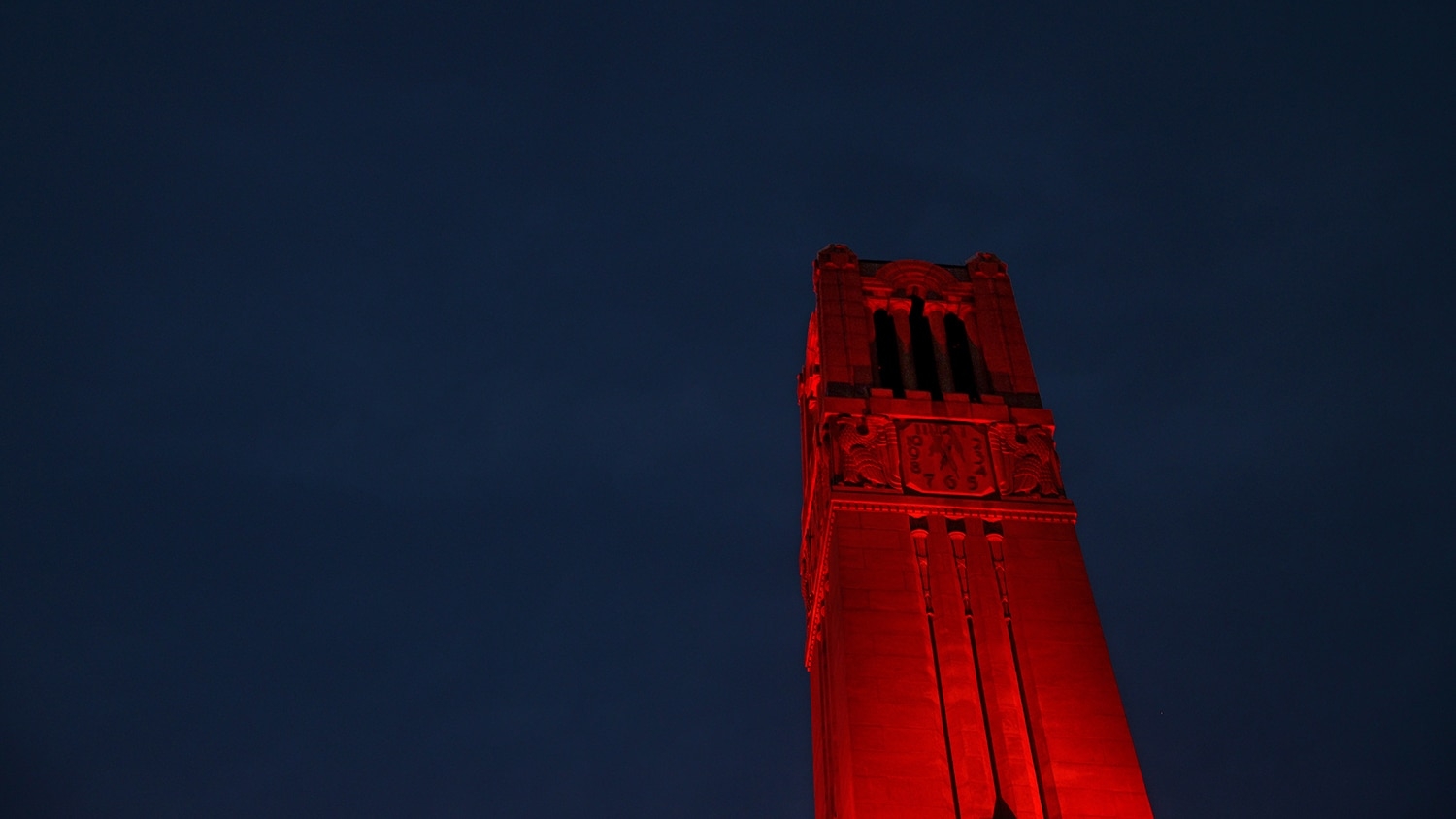Eaglecam eyes eagles
Media contact: Dr. Ted Simons, professor of biology, College of Agriculture and Life Sciences, N.C. State University, 919.515.2689 or tsimons@ncsu.edu
From the ground, an eagle’s nest is imposing – a nest can approach the size of a small car – but not particularly informative. Most of the action, after all, is on the top side of the nest, shielded from the ground.
That’s not the case, however, for a nest along the shore of Jordan Lake near Raleigh. Dr. Ted Simons, a North Carolina State University biology professor, mounted a camera above the nest that is feeding images to a web page. In addition to providing an informative view, the webcam is giving Simons, who is also part of the North Carolina Cooperative Fish and Wildlife Research Unit in the College of Agriculture and Life Sciences at N.C. State, experience with two things he wanted to explore: wireless video observation of wildlife and what Simons calls “citizen science.”
Simons said he first considered mounting a webcam above the nest when he took his ornithology class to Jordan Lake in the spring of 2010. When Simons pointed out the nest to his class, the discussion turned to whether area residents were aware that bald eagles were nesting in the area. Simons was aware of webcams above eagle nests in other parts of the country, and wondered whether a camera could be mounted on Jordan Lake, given the remote location and lack of power.
So Simons formed an eclectic collaboration that included a neighbor who is an engineer and likes to build gadgets, several computer science students and a former student who now owns a tree service business. The result is a webcam above the nest and a web page where the video stream produced by the camera is on view. The pictures the camera is broadcasting are online at http://www.basic.ncsu.edu/eaglecam. The web page also includes information about everyone who made the project a reality.
“We’re doing this both because we’d like more people in the Triangle to know that bald eagles have returned to this area, and populations have increased dramatically over the last 20 years or so and because we’re trying to adapt the technology of wireless video connected to the internet to allow us to do other types of monitoring that we use in our research,” Simons said.
The camera was mounted last October. Simons says the eagles arrived just before egg-laying in December. The first chick hatched Jan. 13, with the second emerging from its shell a few days later. Simons said the chicks will be in the nest for about three months.

Putting the eagle images online was something of an engineering feat. The camera feed travels by wire down the tree to a battery-powered transmitter, is sent wirelessly across the lake to a receiver housed in an accommodating lake resident’s garage, then travels via Digital Subscriber Line (DSL) to a server on the N.C. State campus.
By putting the camera online for the world to see, Simons has been able to experiment with citizen science, engaging anyone who wishes to become involved in observing the nest and recording what goes on there. The eagles also have a Facebook page developed by the U.S. Army Corps of Engineers. Jordan Lake is a Corps of Engineers lake. The Facebook page is at http://www.facebook.com/JordanLakeEagleCam?ref=ts&v=w.
“We’d like to study the information that we’re getting (from citizen observers), compare it to the recorded video and look at different ways of engaging people both through a citizen science project like this and also to evaluate the type of information that we’re collecting,” says Simons.
As of early February, the eaglecam web page had received more than 1.5 million visits from more than 50 countries.
Written by: Dave Caldwell, CALS Communications, 919.513.3127 or dave_caldwell@ncsu.edu


